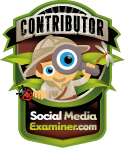
“In order to draw meaning from an example it doesn’t have to be from your world.” – Malcom Gladwell
Mind Blowing Facts
Amazon, Facebook, Google, and Apple have a combined market cap (total market value of outstanding shares) of approximately $1.72 trillion US Dollars.
This equates to the GDP of Canada, thereby making them collectively equivalent to the 10th largest country in the world. Think about that for a moment.
These companies have one thing in common: Their business models are designed to capitalize on subscription relationships.
The good news is you can learn from their respective business models how to make your small business a winner in the subscription economy.
Amazon: A Retail Buying Subscription
Thanks to its Prime subscription product, Amazon controls 43% of all eCommerce worldwide. The roughly 10 billion US Dollars Amazon generates with Prime subscriptions pales in comparison to the revenue it generates from buyers with a subscription discount mindset.
Facebook: A Social Subscription Community
Everything Facebook does as a free membership community is designed to learn as much about our behaviors as possible. Then it monetizes that data with advertising. The reason this community remains free is the users are the product advertisers are paying to reach.
Google: A Subscription Identity Service
YouTube, Contacts and Docs (Drive) are just a few of the many free Google subscription services that collectively establish your online identity. Paradoxically, the more Google knows about you the better it can serve you with these services, while also better serving the advertisers willing to pay to reach you and people with similar identities.
Apple: A Subscription Experience
We think of Apple as a company that sells innovative products, and it does that exceptionally well because it is intensely focused on guiding your subscription experience with its products and services. This is why there are just a few product choices available from selected retail outlets, and why Apple now offers economic incentives to rent rather than own your next iPhone.
Your Digital Subscription Communities
One of the reasons blogging is not what it used to be is that when Google killed Google Reader many people stopped using RSS to subscribe to blogs. Smart businesses took notice and shifted to email subscriptions to deliver their content and marketing messages.
Start thinking in terms of digital subscription communities. You will realize that email newsletters, podcasts and membership sites are opportunities for capitalizing on the subscription economy. I’ll be using all three and more at Landscape Digital Institute.
That brings us to how you can monetize your digital subscription communities. This could be with advertising like the big dogs, or more likely the sale of your products and services.
Personally, I like all three for different reasons. We’ll discuss this further in a future episode of This Old New Business Podcast.
Are you a lawn or landscape or related green industry professional?
Consider joining our free Landscape Digital Institute community to discover relevant resources, tools and training on all aspects of digital business, selling and marketing
I’d love to hear your thoughts on the subscription economy. Meet me over on Twitter to take the conversation further.
About the Author: Jeff Korhan, MBA, is the author of Built-In Social and host of This Old New Business podcast.
He helps organizations use media to create exceptional customer experiences that drive business growth in a digital, social and global world. Connect with Jeff on LinkedIn, Twitter, Facebook, and Google+




